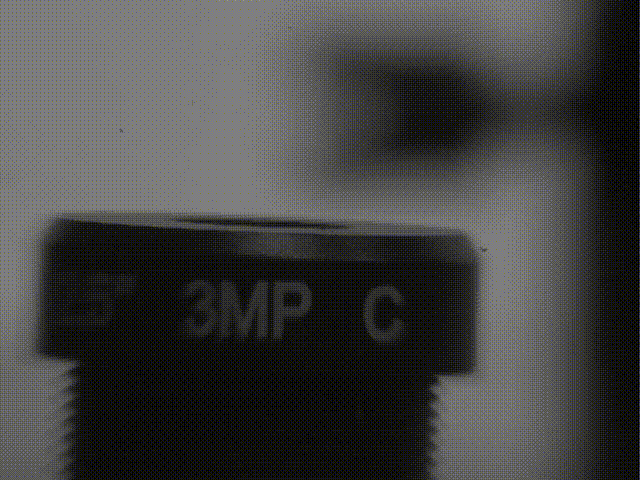
Liquid Lens
2021-05-11
Preface
A lens is both a telephoto lens and a macro lens. This is a magical innovation, the principle of bionics, just like the human eye is inserted into the lens of a mobile phone. The flowable liquid is wrapped by a film, replacing the traditional optical lens, and realizing the change of focal length and focus.
Human Eye Bionics
The human eye is not as complicated as an optical lens, but it is the most sophisticated optical imaging system in the world. After the light enters our eyeballs, it passes through the lens; the lens constantly adjusts its shape to change the diopter, so that what we see will always remain clear. The human eye uses the ciliary muscle to compress the lens to achieve focus. The structure is simple but quick to respond, which is not comparable to optical lenses.
Liquid Lens
The biggest difference between the liquid lens and the traditional optical lens is the material. The liquid lens is not composed of glass or resin material with a fixed shape, but is composed of a special liquid, which is flexible and can be deformed. The liquid lens acts as if the lens of the human eye is pulled by the ciliary muscle, which can achieve rapid zooming and focusing by changing the degree of curvature of the lens.
There are two main types of liquid lenses: reflective liquid lenses and refractive liquid lenses.
1. The reflective liquid lens is a variable focal length mirror. When the container with the liquid rotates, the centrifugal force will make the surface of the liquid form an ideal concave surface. By simply changing the rotation speed, the curvature of the mirror surface can be changed, which can be used to replace traditional glass mirrors with long processing cycles and high processing costs.
2. Refractive liquid lenses can be divided into three categories: gradient index lenses (liquid crystals), liquid-filled lenses, and electrowetting effect lenses.
① Gradient refractive index lens, by changing the voltage applied to the liquid crystal to adjust the refractive index of the liquid crystal, so as to achieve zooming. This technology has low control voltage and is easy to be arrayed; however, the adjustable focal length range is small, the light energy loss is large, and the distortion is large.
② liquid-filled lens is a lens that changes the curvature of the surface by filling and discharging liquid to zoom. A mechanical device is used to apply pressure to the liquid in the cavity to redistribute the liquid in the body cavity and change the radius of curvature. This technology has low drive power consumption, flexible lens aperture size, and large zoom range; but its structure is more complex and sensitive to the effects of vibration and gravity.
③ The electrowetting effect lens is a liquid lens that controls the wetting characteristics of the liquid on the solid surface by changing the applied voltage. So what is the electrowetting effect? Simply put, it is to control the surface shape of the droplet by voltage. More precisely, the electrowetting effect is a physical and chemical phenomenon. The wetting characteristics of the liquid on the solid surface are controlled by changing the applied voltage of the liquid-solid interface, thereby changing the contact angle of the droplet to make it look like a human The lens of the eye changes its curvature to achieve zooming. At the same time, for different applied voltages, the surface curvature will change, so as to achieve optical zoom.
Application of liquid lens
Traditional optical lenses require a large number of mechanical components (including gears, motors, bearings, etc.) to participate in each zoom and focus operation. The mechanical wear caused by the movement of complex mechanical structures will inevitably lead to shortened lens life and reduced image quality. The lens composed of liquid lens has no (or few) mechanical parts inside, and it works in a fully electronic control mode; in work, only need to change the current or voltage to realize the rapid change of the focal length, and there are almost no parts between the parts. In terms of wear, the lens is not only lighter, but also more durable. Furthermore, all actions of the liquid lens are controlled by current, but the power consumption is much smaller than that of a traditional lens that requires multiple lenses to be driven by a motor. It is a highly efficient and energy-saving technology.
The liquid lens can greatly change the curved shape of the lens, so that the liquid lens can easily have a macro function with an ultra-small focusing distance, without the need to use a special multi-lens group design like a traditional lens. Only by changing the shape of the liquid lens, the optical power can be continuously changed, so as to achieve continuous focusing from long-range to close-range. Greatly improve the magnification and image quality effects. It can also reduce the FOV change of the liquid lens from long-range to close-range. There is almost no breathing effect during the zooming process from long-range to general close-up, which is more suitable for video shooting.

FOCtek liquid lens will be released soon! Stay tuned! !
Copyright © 2020 Foctek Photonics, Inc. All Rights Reserved All Rights Reserved 闽ICP备05011100号
Power:BAINANET


 sales@foctek.com
sales@foctek.com